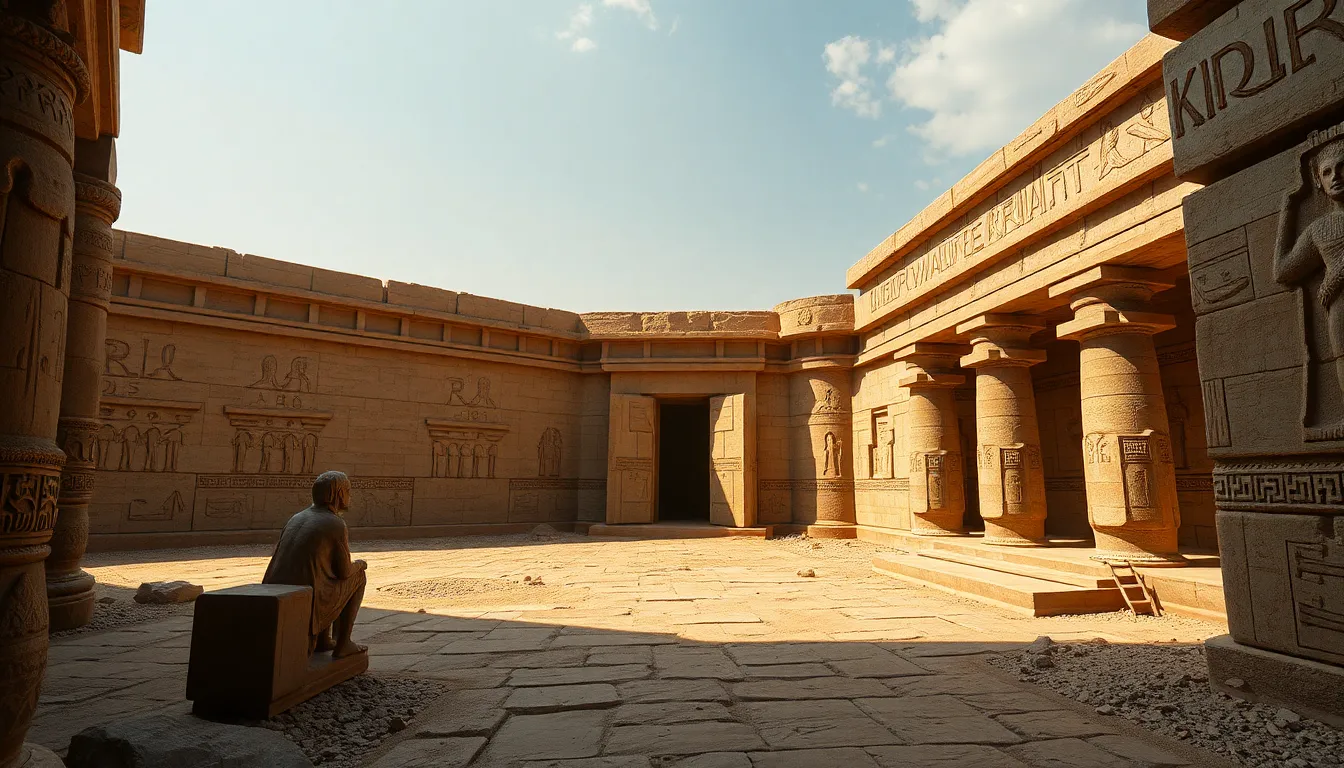The Connection Between Tomb Texts and Ancient Egyptian Warfare
I. Introduction
Ancient Egyptian civilization, known for its monumental architecture, rich culture, and intricate belief systems, thrived for thousands of years along the banks of the Nile River. This civilization was not only remarkable for its contributions to art and science but also for its complex socio-political structures and military endeavors. The importance of tomb texts cannot be overstated, as they offer invaluable insights into the culture and beliefs of the ancient Egyptians.
This article aims to explore the connection between tomb texts and warfare in Ancient Egypt, illustrating how these inscriptions reflect the society’s values, the role of the military, and the significance of military achievements in the context of the afterlife.
II. Historical Context of Ancient Egyptian Warfare
The military history of Ancient Egypt spans from the early dynastic periods through the New Kingdom, characterized by both defensive and offensive strategies.
- Early Dynastic Period: Establishment of the unified state and early military campaigns.
- Middle Kingdom: Expansion into Nubia and increased military organization.
- New Kingdom: Height of military power with campaigns in Syria and Palestine.
Warfare played a crucial role in statecraft, serving as a means to secure resources, expand territory, and assert dominance over neighboring regions. The military was a key institution in Ancient Egyptian society, influencing everything from politics to religion.
III. The Nature of Tomb Texts
Tomb texts, often inscribed on walls, sarcophagi, and other funerary objects, served both practical and ceremonial purposes. Their primary aim was to ensure the deceased’s safe passage to the afterlife and to secure their eternal existence.
Common themes found in these inscriptions include:
- Spells for protection and guidance
- Declarations of achievements and titles
- References to the journey through the afterlife
Specific types of tomb texts relevant to warfare include:
- Military achievements and campaigns
- References to battles fought
- Invocations for divine protection in war
IV. Depictions of Warfare in Tomb Texts
Many tomb texts provide vivid accounts of military engagements, often glorifying the deeds of the deceased. For example, the tomb of General Horemheb contains inscriptions that detail his military campaigns against the Nubians and the Asiatic tribes. These texts not only recount battles but also celebrate strategic victories.
The iconography and imagery related to warfare in tomb art often depict:
- Pharaohs and generals leading troops
- Scenes of victory, such as capturing enemies
- Symbols of power, such as the ankh and crook
The symbolism of military success in these texts is profound, as it signifies not only earthly triumphs but also the assurance of a favorable afterlife.
V. The Role of the Pharaoh as a Warrior
The Pharaoh was not merely a ruler but also a military leader, embodying the dual role of sovereign and warrior. Tomb texts often depict the Pharaoh in this light, showcasing their martial prowess and divine right to lead.
Inscriptions frequently emphasize the Pharaoh’s victories and their protection by the gods, reinforcing the belief that their military success was divinely ordained. This connection between divine right and martial prowess was critical for maintaining authority and legitimacy in Ancient Egypt.
VI. The Afterlife and Military Valor
Beliefs about the afterlife in Ancient Egypt posited that one’s earthly deeds directly influenced their eternal existence. Military accomplishments were highly regarded, viewed as evidence of strength and virtue.
In this context, tomb texts served to memorialize a warrior’s legacy. They were essential for:
- Ensuring the deceased’s remembrance
- Celebrating their contributions to the state
- Facilitating a positive judgment in the afterlife
The significance of military achievements was thus intertwined with the quest for eternal life.
VII. Case Studies: Notable Tombs and Their Military References
Examining specific tombs reveals how military references were utilized to commemorate significant figures. For instance:
- The Tomb of Ramesses II: This tomb features extensive carvings that depict his campaigns against the Hittites and Nubians, celebrating his victories.
- The Tomb of Seti I: Known for its detailed reliefs, it illustrates military battles and highlights the Pharaoh’s role as a warrior.
- The Tomb of Horemheb: Contains inscriptions detailing his rise from general to Pharaoh, emphasizing his military achievements.
Each of these tombs showcases how warfare was not only a matter of state importance but also a personal legacy for those who led their troops into battle.
VIII. Conclusion
The connection between tomb texts and warfare in Ancient Egypt is a rich tapestry that reveals the civilization’s values, beliefs, and social structure. Key findings indicate that military achievements were celebrated in tomb inscriptions, reflecting the society’s reverence for strength and valor.
Understanding this connection enhances our comprehension of Ancient Egyptian society, illustrating how warfare shaped individual legacies and the collective memory of the civilization. Further research into lesser-known tombs and texts may yield even more insights into the intricate relationship between military endeavors and the beliefs surrounding the afterlife in Ancient Egypt.




